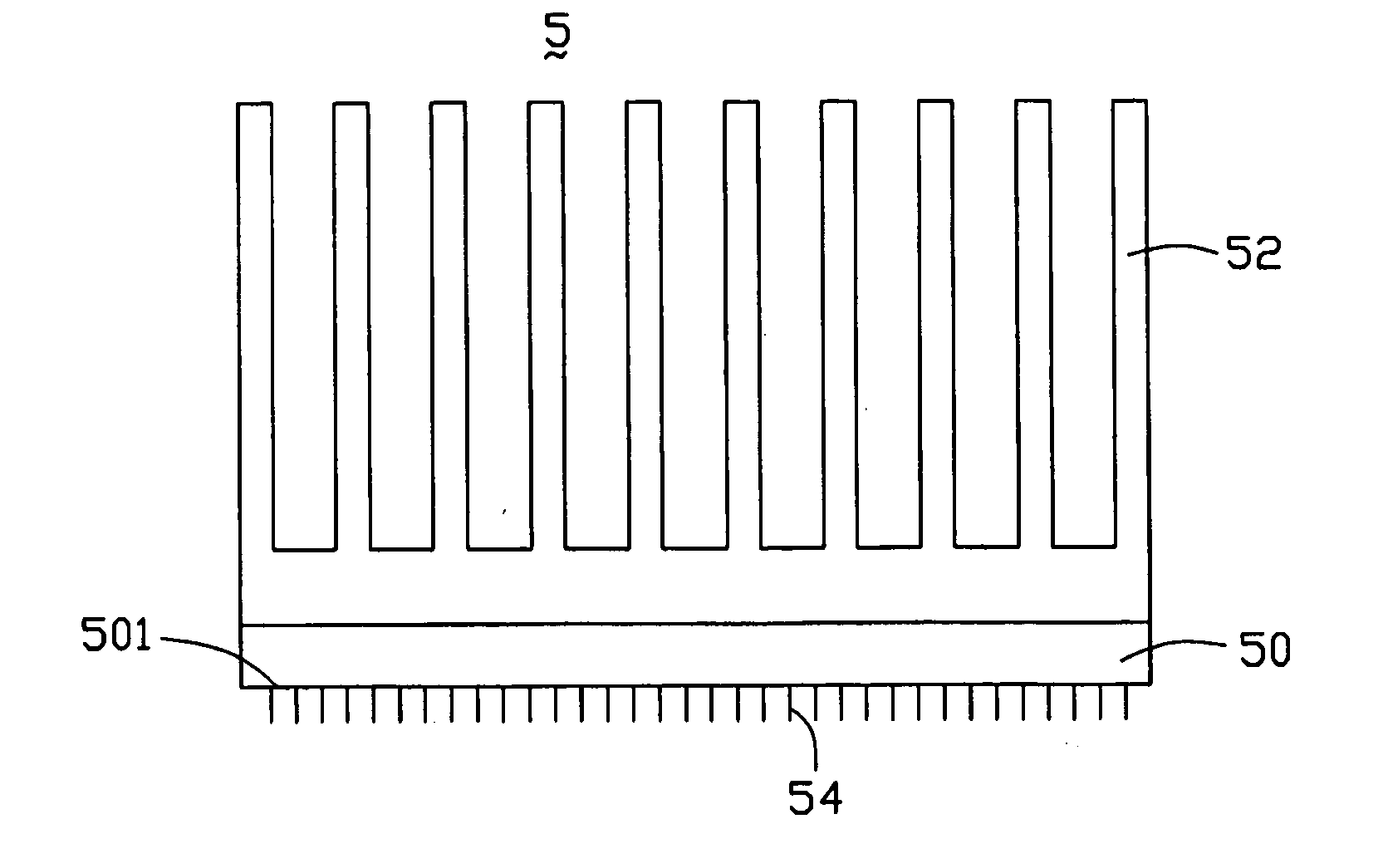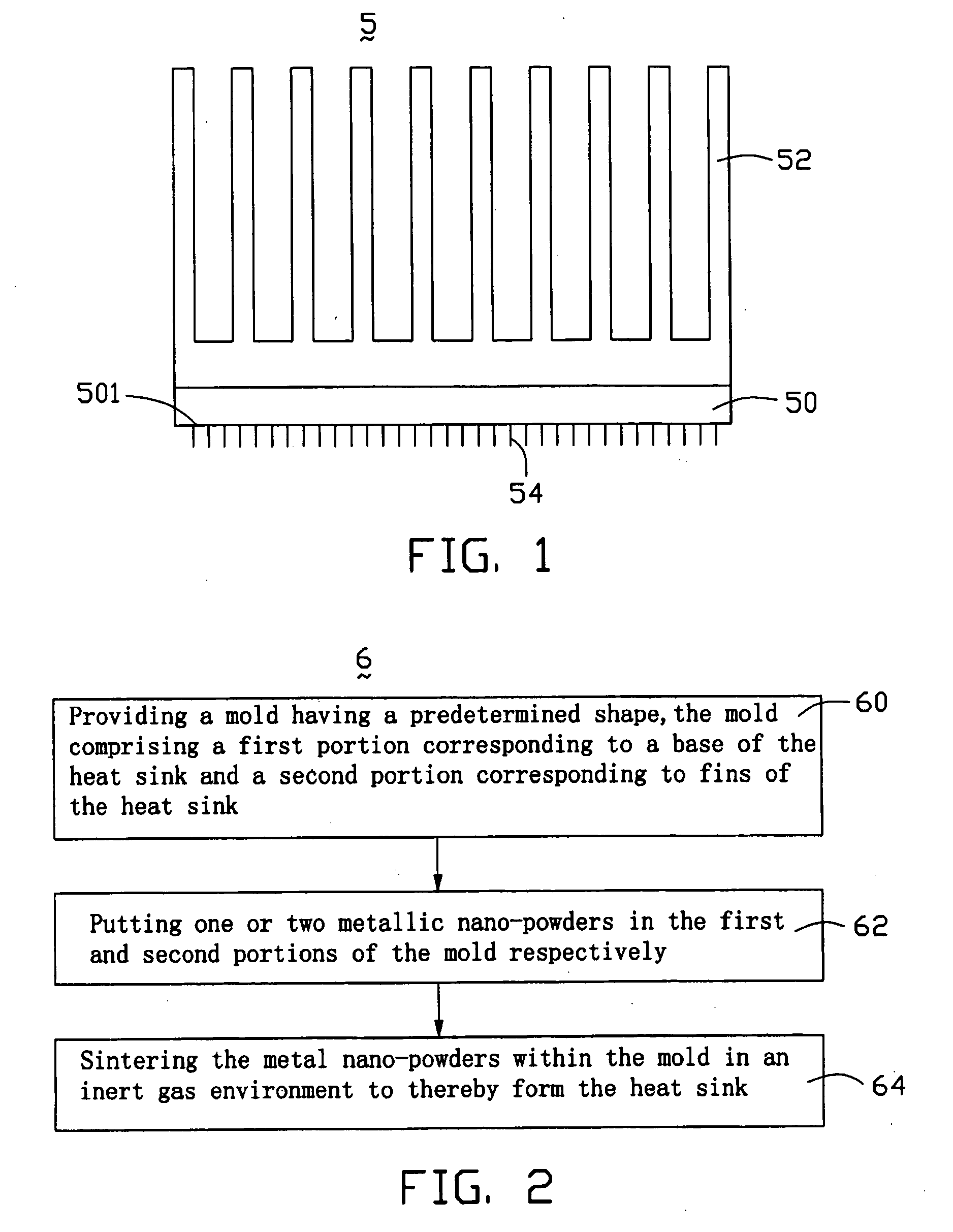Heat sink and method for making same
a heat sink and heat sink technology, applied in the direction of basic electric elements, semiconductor devices, lighting and heating apparatus, etc., can solve the problems of poor heat transfer efficiency, poor thermal conductivity, and high heat generation of electronic components, so as to reduce the thermal resistance between the base and the fins, improve heat transfer efficiency, and improve the effect of heat transfer efficiency
- Summary
- Abstract
- Description
- Claims
- Application Information
AI Technical Summary
Benefits of technology
Problems solved by technology
Method used
Image
Examples
Embodiment Construction
[0019] Referring to FIG. 1, a heat sink 5 as a heat dissipating device for dissipating heat from an electronic component in accordance with the present invention comprises a base 50, and a plurality of fins 52 formed on the base 50.
[0020] The base 50 and the fins 52 are formed integrally by sintering one or two metallic nano-powders. Preferably, the base 50 and the fins 52 are made from a same metallic nano-powder. Alternatively, the base 50 and the plurality of fins 52 are made from different metallic nano-powders. The metallic nano-powder is selected from the group consisting of gold, silver, copper, aluminum, and any alloy thereof. A grain size of the metallic nano-powder is preferably in the range from 1 to 99 nanometers. Preferably, the heat sink 5 further comprises nanomaterials such as carbon nanotubes 54 or carbon nanocapsules attached thereon, for improving the heat exchange performance of the heat sink 5. More preferably, the nanomaterials are carbon nanotubes 54, which a...
PUM
 Login to View More
Login to View More Abstract
Description
Claims
Application Information
 Login to View More
Login to View More - R&D
- Intellectual Property
- Life Sciences
- Materials
- Tech Scout
- Unparalleled Data Quality
- Higher Quality Content
- 60% Fewer Hallucinations
Browse by: Latest US Patents, China's latest patents, Technical Efficacy Thesaurus, Application Domain, Technology Topic, Popular Technical Reports.
© 2025 PatSnap. All rights reserved.Legal|Privacy policy|Modern Slavery Act Transparency Statement|Sitemap|About US| Contact US: help@patsnap.com


